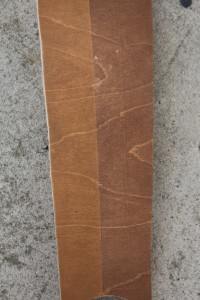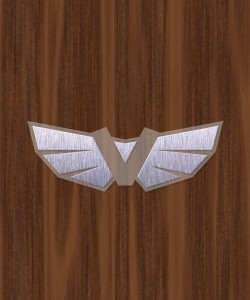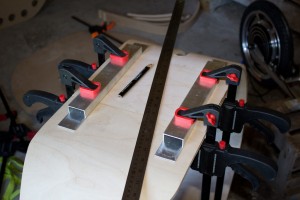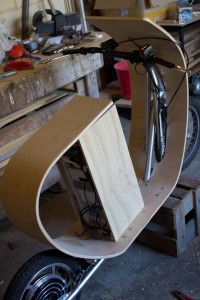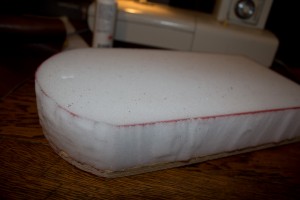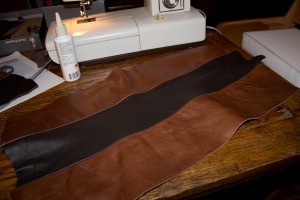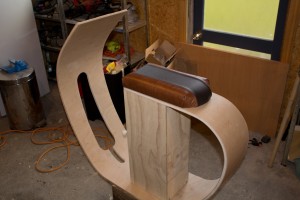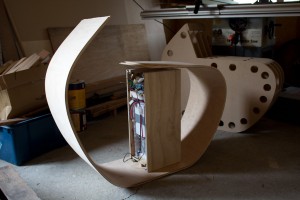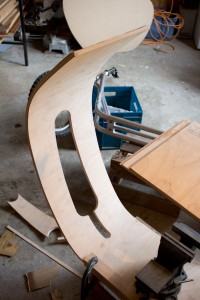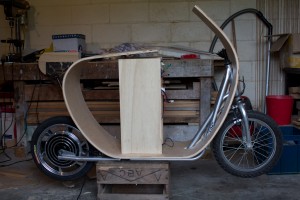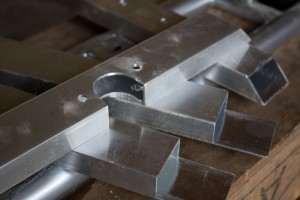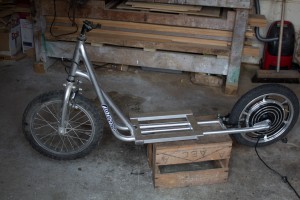Not every minute of a project can be packed with excitement. Sometimes, you just have to get on with it.
The biggest excitement on the project by far last week was ‘test driving’ the scooter to work. As I am still a little dubious about the legal requirements, I took a circuitous route down a path along the local river. Unfortunately, the section I chose to take was not sealed, and I ended up losing my nuts. Erm. I mean, some of the nuts came off the bolts holding the fairing to the frame. This wasn’t a biggie – there are quite a lot of bolts holding the scooter together. The final construction will use nyloc nuts. Some observations:
- The ride quality is great (except on gravel).
- Torque was fantastic, even hitting maximum speed uphill.
- Maximum speed was around 32 km/h. Not complaining, really.
- The brakes are not that good. Yes, this one is a complaint.
- The handlebars, already at maximum extension, are a little low.
- There is not quite enough area for feet. It needs pegs.
- There is no stand. A problem once I got to work! (No beer crates to lean on – will work on that).
After the fun day test-driving, I took the scooter completely apart again. The plan is that next time it goes back together will be the final time (with nyloc nuts). Once again I spent some time repairing peeling laminations that the rigours of the drive bought to light.
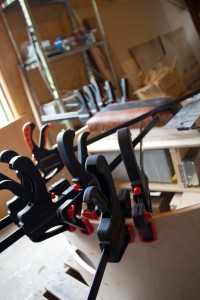
I managed to construct a fairly good glue applicator needle from a 10ml plastic syringe with the nozzle cut off and a ball-pump needle screwed in to the hole! This fits easily into small gaps and allows me to spread the glue well before clamping. I use a plastic off-cut from a takeaway container as a spatula to spread the glue in the crack.


K-Mart supplied a cheap, generic, extendible kick stand. On testing it, it was miles too long, so I threw away the extension and put the hacksaw to use making it shorter. My plan is now to buy another one, cut it the same and put it on the other side. They are the right length to stand the bike vertically (rather than leaning). I may also look at some sort of steering lock so that the front wheel doesn’t move while parked.
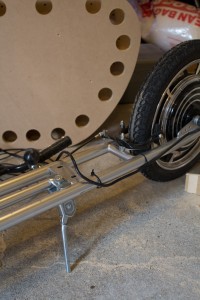
I plan to stain the bike, but also want a racing stripe. My theory was that masking tape wouldn’t work as the stain would simply bleed under it, causing a wavy/uneven line. I was pleasantly surprised by the result – virtually no bleed! I had to sand the surface to an almost polished finish and use a good quality painters tape, but it worked. Here you can see a couple of test colours, both masked along a line. Rimu on the left, Kauri on the right. I think I will use Rimu for the main colour, and something darker than Kauri – maybe Ebony – for the racing stripe. I used Wattle Colourwood pigmented stain. Once the scooter is stained, I plan to get it clear-coated (like an automobile).
